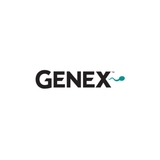
4 minute read
Cooperative Modernization
by GENEX
Rebuilding & Redefining Your GENEX
By Terri Dallas, Vice President of Member Relations
We highly value GENEX delegate and alternate input. Two years ago, we asked delegates to provide feedback on what differentiates GENEX from other bovine genetics businesses. The overwhelming answer was being a co-op sets us apart.
Then, at our fall 2019 delegate input meetings, our CEO Huub te Plate shared with delegates and alternates information about the Good to Great process happening at GENEX and the resulting Hedgehog statement developed by the GENEX council and employees: “We are best at being a modern cooperative delivering advanced genetic and reproductive solutions to progressive dairy and beef producers globally.”
During those same fall input meetings, delegates and alternates were asked to provide input on how to modernize the cooperative. In other words, provide ideas on continuing to serve our current members while recruiting new members in the U.S. and possibly around the world.
We were looking for ideas on how to attract young producers – those who will be industry leaders in 20 years – to become more involved GENEX members. This has become a bigger challenge each year as the demographics of our membership continues to change. Plus, although there have been many changes in production agriculture and at GENEX, our governance structure had not changed in over 25 years.

During the fall 2019 delegate input meetings, delegates and alternates provided input on how to modernize the co-op and attract young producers to become more involved GENEX members.
About half of the delegate groups at those fall input meetings reported a good option would be governance based on the business a producer does with GENEX and/or a system based on cow numbers. Also important to the delegates was keeping the one member one vote philosophy in place. The delegates reported a decrease in the number of council directors made sense given the decline in the number of producers in the U.S. as well.
Council Accepts New Governance Structure
In January 2020, the GENEX council unanimously voted to change from our geography-based 13-region governance structure to a revenue-based four-tier structure. Moving from our current structure to one based on the amount of business members do with the co-op allows for meaningful interaction within the tiers.
Each tier will have members with similar demographics.
The tier system is flexible and scalable; tiers can be added in the future and can grow with the cooperative. For example, we could add an international-focused tier.
The goal is fair treatment for all members.

Earlier this year, the GENEX council unanimously voted to accept a new governance structure, based on the amount of business members do with the co-op.
Structure to Include Tier System
The tier system aligns representation and the election of delegates based on the annual amount of semen,
products and services a member purchases from GENEX, while keeping the one member one vote philosophy in place. There are four tiers based on the amount of GENEX business. The following is a breakdown based on 2020 revenue:
Tier 1: 60% of total members; $500 to $3000 in annual purchases from GENEX
Tier 2: 25% of total members; $3001 to $11,400 in annual purchases from GENEX
Tier 3: 10% of total members; $11,401 to $43,000 in annual purchases from GENEX
Tier 4: 5% of total members; $43,001+ and up in annual purchases from GENEX
A committee of GENEX council and management will meet every three years to review the balance of the tiers. We envision members within each tier will have similar values, views, desires, challenges and perception of GENEX versus competitors. Member communications and delegate activities will be tailored for each tier.
Tier 1, with the largest number of members, has the most delegates and alternates. Conversely, Tier 4 with the smallest number of members and alternates has the smallest number of delegates.
Tier 1: 4,222 members; 30 delegates
Tier 2: 1,759 members; 20 delegates
Tier 3: 704 members; 15 delegates
Tier 4: 352 members; 10 delegates
New Structure and Prerequisites for GENEX Council
Delegates in each tier will elect two council directors per tier, except for Tier 2 which will elect three council directors. Elections for council directors will be held at the cooperative’s annual meeting. The maximum size of the GENEX council will be 11 directors. Nine council directors will represent the tier system. The other two council directors will be at-large positions appointed by the GENEX council. At least two of the 11 council directors must represent beef.
The GENEX council also agreed to adopt several other changes. Council directors must now purchase a high majority of their semen from GENEX. This is in addition to spending a minimum of $500 of semen, products and services per year. Other changes include adding term limits effective with the 2021 council elections. Council directors can serve a maximum of six, three-year terms and the maximum age when elected to serve a term is 72 years of age.
TIMELINE: GENEX Governance Changes
Cooperative Modernization discussed at Delegate Input Meetings in November and December 2019.
GENEX representatives met with cooperative experts Michael Cook and Michael Weaver to gain input on how other co-ops are modernizing.
Cooperative modernization white paper presented to GENEX council committee on December 17, 2019.
Final recommendations presented to GENEX council on January 20, 2020. Final recommendations approved by GENEX council on January 21, 2020.
New structure shared at virtual annual meetings on June 9 and June 11, 2020.
Delegate election based on tiers starts in July 2020 and concludes in September. Members in Tier 1 elect their delegates/alternates, members in Tier 2 elect their delegates/ alternates, etc.
Delegates elected in 2020 will seat new GENEX council at March 2021 annual meeting (no council election in 2020).










